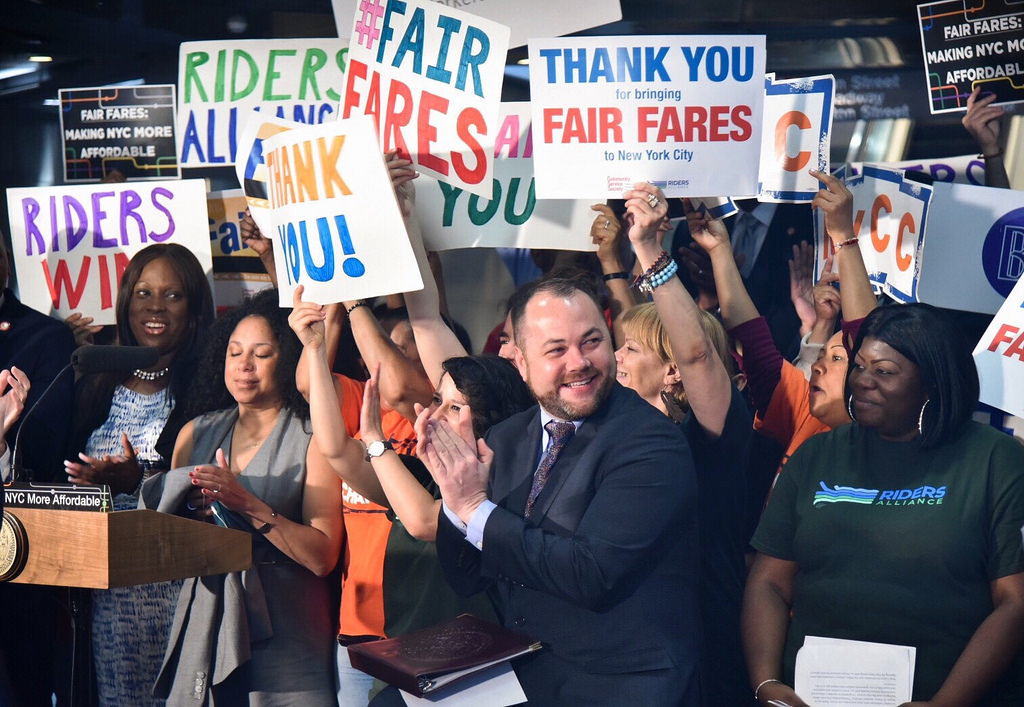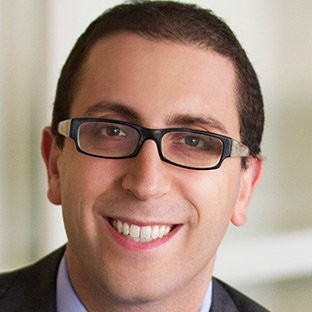The city budget passed last week shows that Mayor de Blasio has abandoned his original campaign promise of uniting the “Two Cities” — especially when it comes to transportation. Instead of bridging the gap between haves and have-nots, the budget widens it — burdening most heavily those who can least afford it. Many good transportation programs were cut or slimmed down drastically — even as the mayor continued to pour tens of millions of dollars into his money-hemorrhaging boondoogle, the NYC Ferry.
During lean times, the goal of any budget — and of the mayor and the City Council — should be to create a more livable city, one that is welcoming to everyone and accommodates its residents first and foremost as we all work to bring back the vibrant city we know and love. That effort should involve investing in transportation modes that accommodate more people and faster travel — supporting bus lanes, creating safer infrastructure for people, and not sinking money into low-capacity, high-subsidy forms of transportation. Unfortunately, that’s not what the city’s new budget offers.
Notably, it cut $65 million from the popular Fair Fares program, reducing the half-fare transit subsidy for low-income New Yorkers by about a third. A number of pols argued that this was a right-sizing made necessary by the pandemic-stoked drop in transit ridership, but advocacy groups were dismayed at the removal of a subsidy they had fought long and hard for.
“At a time of unprecedented, widespread unemployment, especially among black and brown New Yorkers and younger people trying to enter the workforce, Fair Fares provides a transit lifeline to job search, medical care and other necessities of life,” Riders Alliance and the Community Service Society wrote in a joint statement. “Especially now, as the economy starts to reopen, half-price subway and bus fares will be even more important to both essential and returning workers.
But de Blasio buried them in blather: “I think the whole underlying concept of the program got just disrupted profoundly by the coronavirus and we’re not going to see that turnaround in the short term,” he said last week — jinxing transit just as it has begun recovering.
The administration also went forward with its plan to cut around $6 million from its Better Buses program. And this week we learned that Corey Johnson’s Streets Master Plan, an aggressive proposal to rethink New York City streets, may also be delayed — a short-sighted response that shows a lack of clear thinking on the part of the administration.
“The benchmarks laid out by the streets master plan were passed into law for a reason and they should not be delayed, especially now,” Johnson told The New York Post. “We can’t let a painful budget slow down our city’s reimagining of what public space and mass transit look like.”
.@BilldeBlasio's tale of 2 cities budget also incl:
— Do Jun Lee 이도준 (@dosik) July 1, 2020
$65 million in cuts to fair fares that help poor New Yorkers (guess what untouched NYPD headcount gonna do)
vs.
$62 million on new ferry boats for wealthier white riders (really a gift for waterfront real estate developers) pic.twitter.com/YhDaK47I1g
So what wasn’t cut, at least not to the same degree? The NYC Ferry. Despite plummeting ridership, a subsidy that has long gone toward those who can most afford to pay a higher fare, and a general lack of vision on true city-wide transportation, de Blasio cut only $10 million from the ferry subsidy, and the administration still plans to spend more than $62 million on new boats (almost the same amount it cut from Fair Fares) at a time when other investments would deliver far more transit bang for the buck.
During recent weeks and months, the mayor has resisted a real open-streets plan, failed to expand the bike network at a time of skyrocketing demand, allowed for only 20 miles of bus lanes when the MTA had requested 60 miles, and cut Fair Fares by a third while maintaining his over-subsidized ferry program. These are misplaced transportation priorities if ever we’ve seen them, and they do not show a mayor willing to make New York easier to travel around, better for the people who are here, or more attractive to people who may want to come here.
We await that mayor.
Benjamin Kabak (@2avsagas) is the editor of Second Ave. Sagas, where he covers city transportation.







